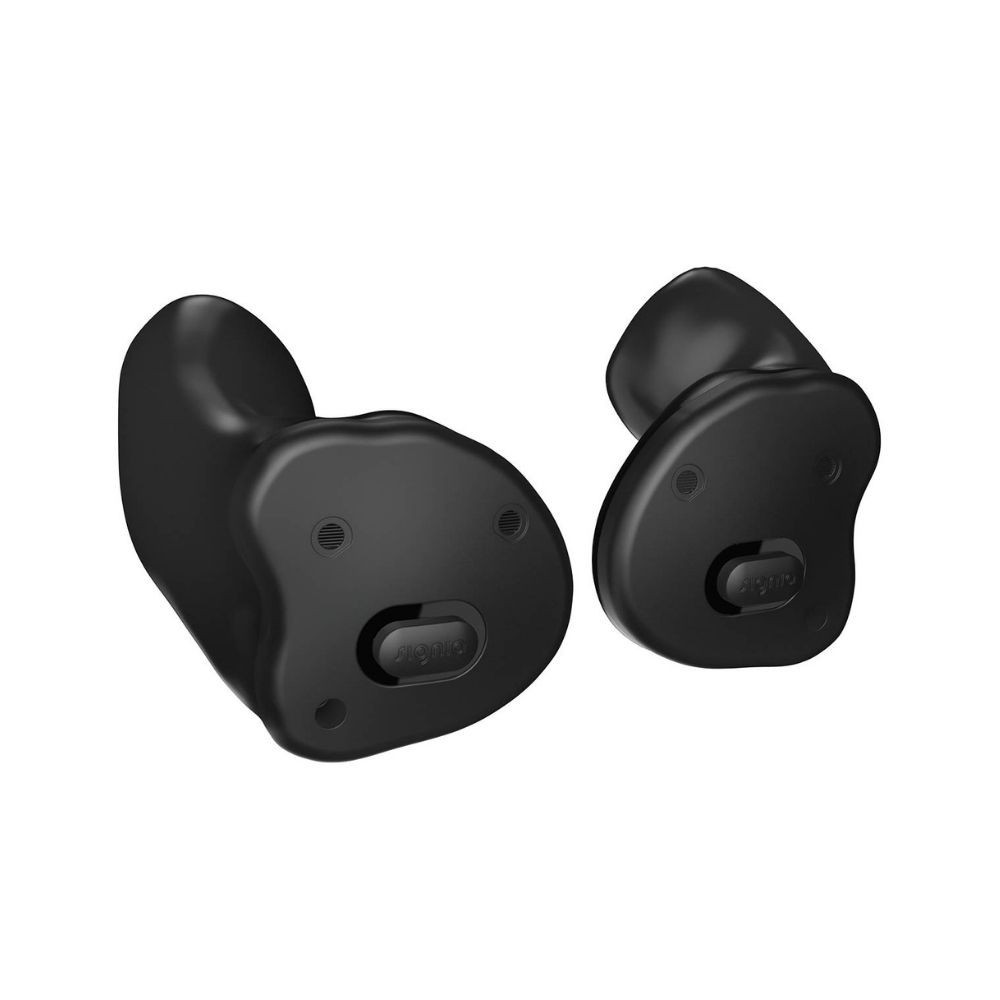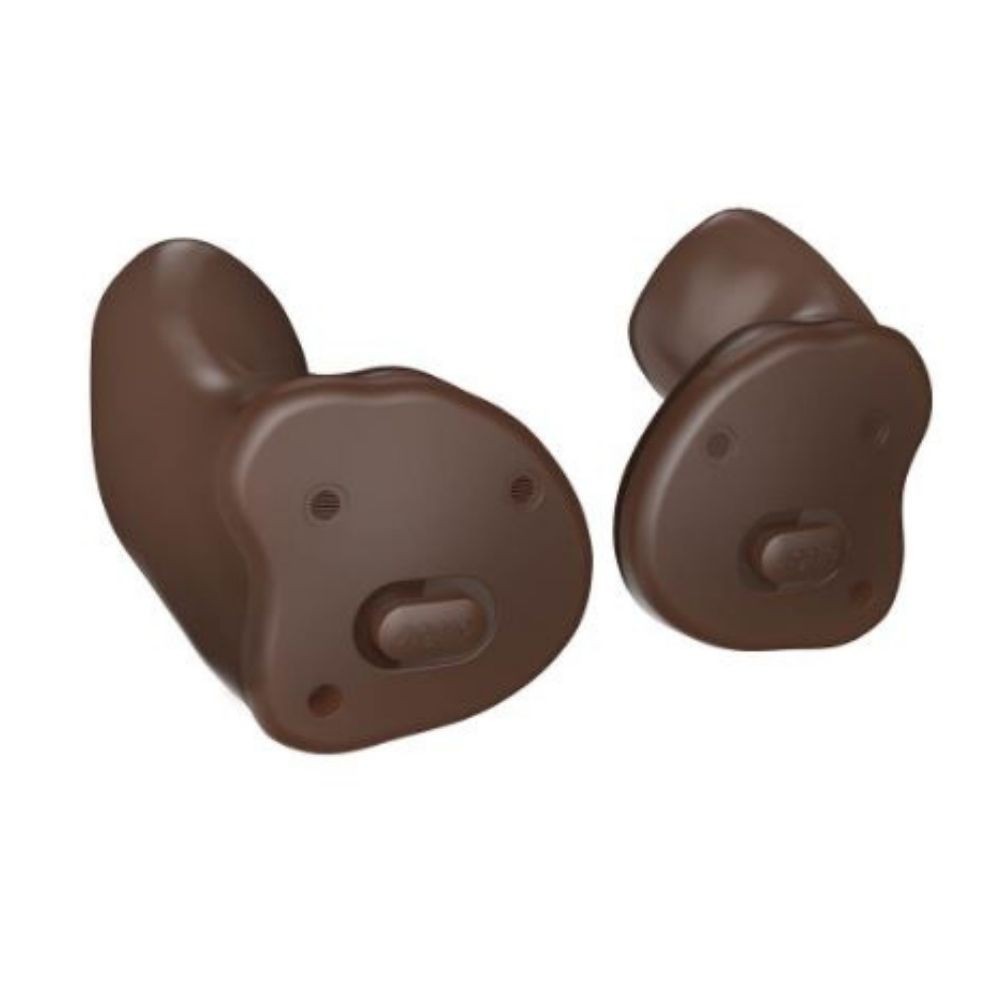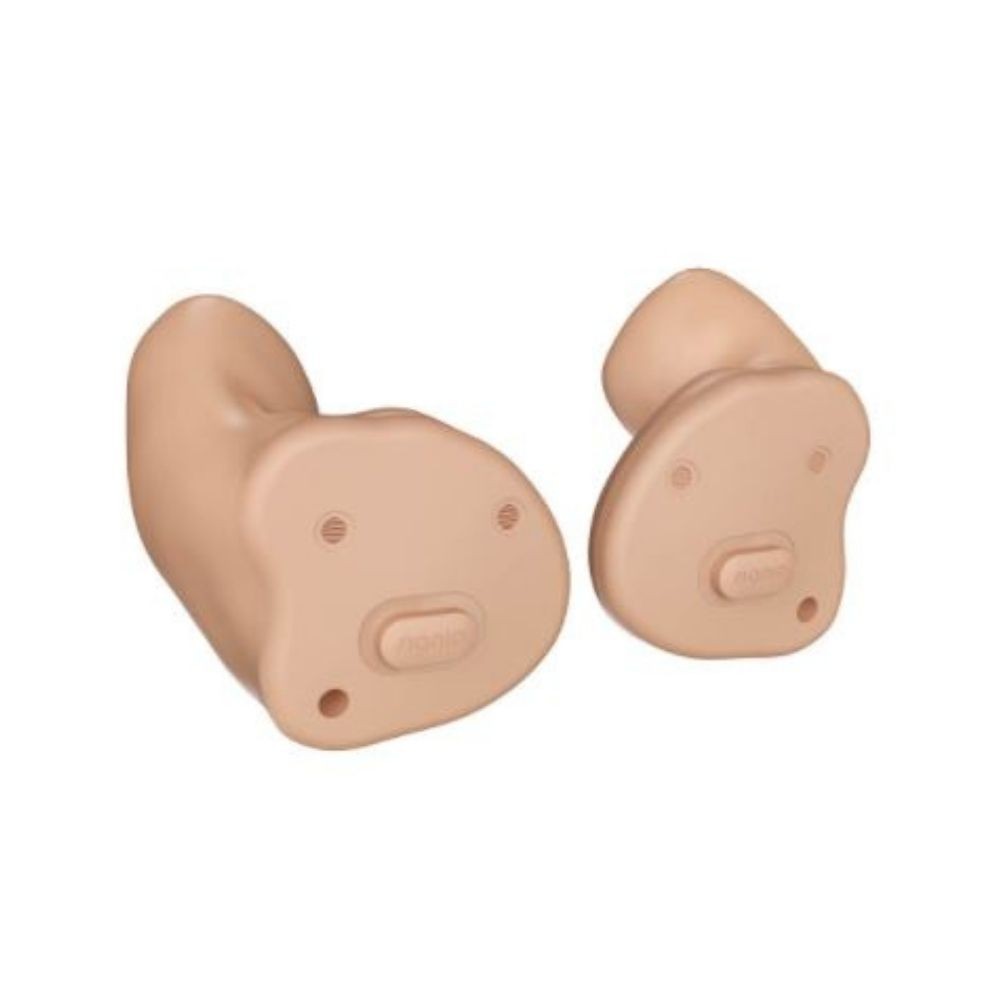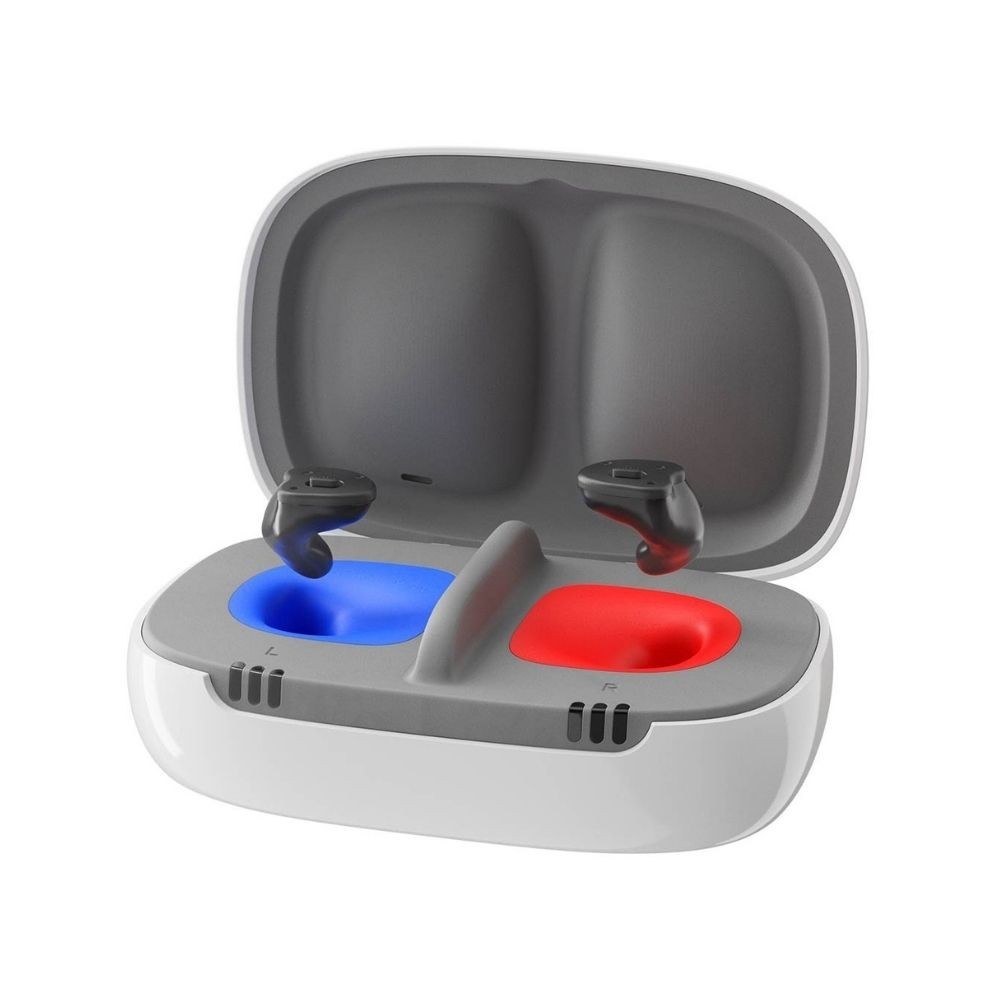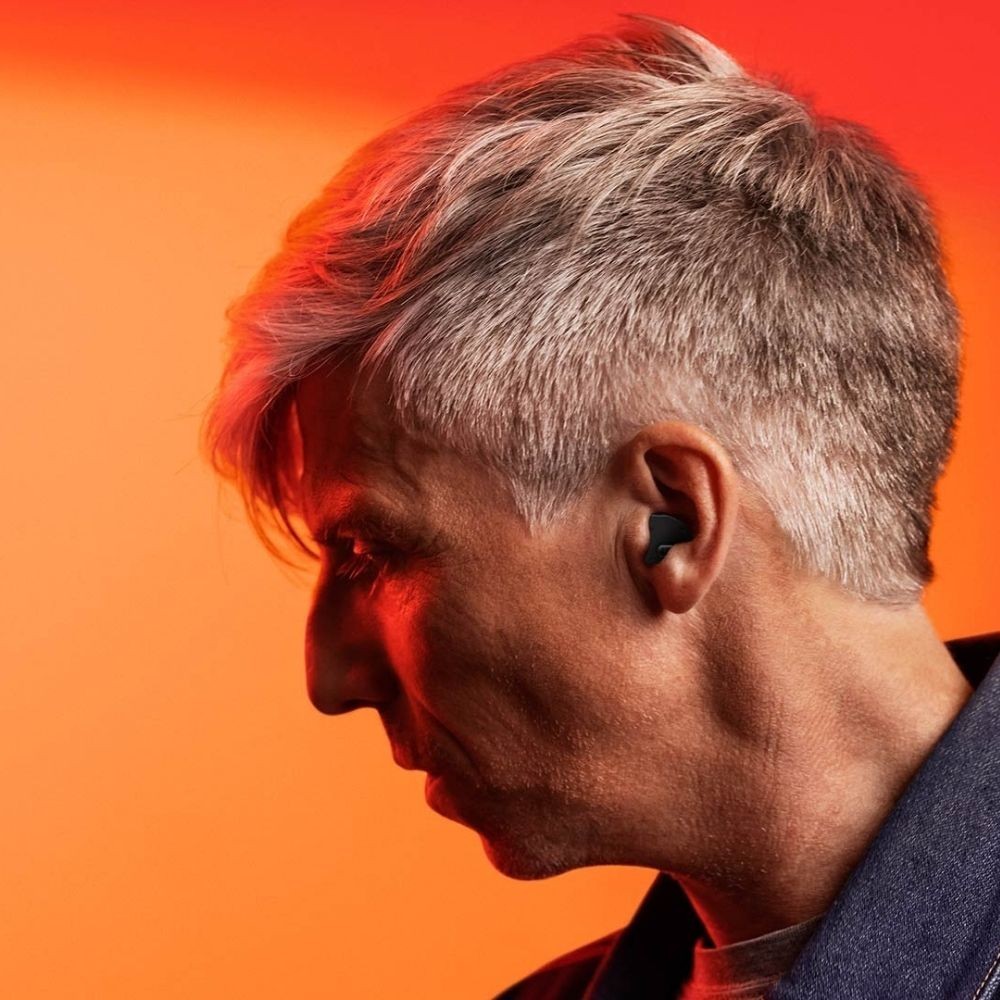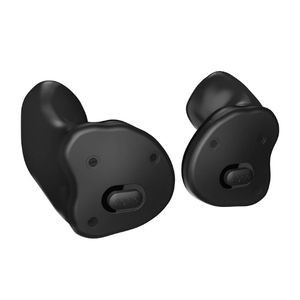In the Ear
Fitting Styles: ITE, ITC
Warranty: 5 years
Charger: Charger included

What's included in our hearing aid prices?
Details & Features
Signia Insio Charge&Go 7AX Hearing Aids Overview
At launch, on the 1st of November 2021, the Signia Insio AX hearing aid was the first custom-fit rechargeable hearing aid with both Bluetooth connectivity and contactless charging capabilities.
The Insio AX also incorporates the successful Augmented Xperience platform that was first introduced in the Signia Pure Charge&Go AX range in May 2021. This platform offers a unique hearing experience within a high-end hearing device. Resulting in a reduction in hearing effort and clear speech in conversation - even on the go and in any hearing situation.
The Signia Insio 7AX hearing aids are the highest performance level in the range and include all the premium features this hearing aid has to offer.
Signia Insio Charge&Go 7AX hearing aids Augmented Focus Technology
What does Augmented Focus Technology do? This Signia technology is built upon two processors to split the sound processing jobs. In brief, one focuses on understanding the sounds that are in focus and the other gives you access to your full environment.
How does the Augmented Focus Technology in Signia Insio Charge&Go 7AX hearing aids benefit you?
The technology means that you will always get clear speech comprehension in a fully immersive soundscape. Leaving background noise to a minimum and giving you an outstanding hearing experience all day. The other great thing about this hearing aid is that it adjusts automatically when you're on the move. So more confidence, less effort and the premium sound your hearing deserves.
Signia Insio Charge&Go 7AX hearing aids other features include:
- Direct Bluetooth streaming from both iOS and Android devices *
- Full AX Feature set including Augmented Focus.
- 20 hours of power throughout your day in just a single charge (streaming dependent).
- The colours available in this hearing range is: Black, Dark Brown, Brown, Mocha, Tan and Beige.
- Available in technology levels 7, 5 and 3.
- Bespoke fit.
- Enhanced speech clarity.
- Motion Sensors included.
- Push Button for easy controls.
- The models available are: ITE and ITC.
- Compatible with the Signia Assistance, remote Telecare and Signia app.
- Compatible with Signia's wireless digital hearing aid accessories, like the StreamLine TV, StreamLine Mic, mini Mic.
- Built-in Li-Ion Cell for contactless rechargeability
- e2e wireless 4.0
Signia Insio Charge&Go 7AX hearing aids style
This new in-the-ear rechargeable hearing aid brings optimum hearing technology and discretion that is custom-made for extra comfort everyday. Custom-made means that the hearing aid itself is adapted to fit your unique ear shape or 'ear anatomy', so it is even more discreet.
You can choose between two models, which are the ITE that sits within your ear and the ITC - sitting even more discreetly in your ear canal.
Rechargeability of Signia Insio Charge&Go 7AX hearing aids
The Signia Insio AX hearing aids are the first custom hearing aids with lithium-ion charging that is contactless and offers innovative Bluetooth connectivity. Insio's charging system means that you just put the hearing aids in the charger and they will automatically connect.
Charge them at night when you are sleeping and wake up good to go knowing that you have the reliability of around 20 hours of power in one charge (this will all depend on your streaming usage).
Signia Insio Charge&Go 7AX hearing aids motion sensors and immersive sound
The motion sensor technology within Insio AX gives you access to a full scope of sound even on the go, so when you are on the move it responds accordingly and automatically.
Other Signia Insio Charge&Go AX hearing aid technology levels:
►Signia Insio Charge&Go 5AX hearing aids
►Signia Insio Charge&Go 3AX hearing aids
Want to discover more about Signia Insio Charge&Go 7AX hearing aids?
Watch the Signia Insio Charge&Go AX hearing aid video, read the Signia AX hearing aid range page, and download the platform brochure below or call us free on 0800 567 7621 for more support.
*Please see the current list of Android / ASHA-supported devices with your audiologist.
**Please note, there will be an additional surcharge of £125 if we are pairing a single hearing aid with an existing aid bought from another company where we are taking over the aftercare responsibilities and looking after both hearing aids.
Paul Harrison is an audiology expert at Hearing Aid UK, with over 20 years of audiology experience and a member of the British Society of Hearing Aid Audiologists Council (BSHAA) between 2015 - 2020.
Watch the Signia Insio Charge&Go 7AX Hearing Aids Video Below
Have any questions?
Here, at Hearing Aid UK, we offer a wide range of hearing aids available on the market - keeping up to date with the best and latest hearing aid technology.
We can support your hearing healthcare in clinic or in the comfort of your own home and with nationwide coverage, we will have an audiologist near you.
Whatever your hearing loss level, budget, or style our audiologists can help you find the perfect hearing solution for you.
Call us free for support and advice on 0800 567 7621
Signia Insio Charge&Go 7AX Hearing Aids Information
Click on the buttons below to discover moreOur specialist service includes:
Do not spend hundreds of pounds without getting a second opinion from us.
Please call us on 0800 567 7621
 Not only are the prices great, but the service is fantastic! Many thanks to your team.
Not only are the prices great, but the service is fantastic! Many thanks to your team.Other pages you might find useful
What's included in our hearing aid prices?
If you are looking at this page then it is likely that an audiologist has suggested that you purchase this particular hearing aid, so is this the best model for you?
In general, any audiologist will always recommend to you the model that best suits your needs. Here is a useful checklist to make sure that is the case.
- Audiologist level of knowledge: The audiologist you have seen will hopefully have a wide knowledge of all available hearing aids, however, some will only be familiar with a small number of brands and therefore may not really be in a position to know which model is the best for you. It is OK to challenge their recommendation and ask them to justify why this particular brand is the one for you.
- Do research: Read about the hearing aid that was recommended. Does it seem like it will suit your lifestyle? Does it have more or fewer features than you need?
- Be aware of sales targets: Many high street retailers have specific tie-ins to a particular manufacturer/brand. The hearing aid they have suggested may still be the correct one for you, but do your research so that you know why they might have recommended it.
If in doubt, feel free to give us a call. That's what we're here for. In the meantime, read all about our review of the best hearing aids for 2025 here
If you have significant hearing loss in both ears, you should be wearing two hearing aids. Here are the audiological reasons why:
Localisation: The brain decodes information from both ears and compares and contrasts them. By analysing the minuscule time delays as well as the difference in the loudness of each sound reaching the ears, the person is able to accurately locate a sound source. Simply put, if you have better hearing on one side than the other, you can't accurately tell what direction sounds are coming from.
Less amplification is required: A phenomenon known as “binaural summation” means that the hearing aids can be set at a lower and more natural volume setting than if you wore only one hearing aid.
Head shadow effect: High frequencies, the part of your hearing that gives clarity and meaning to speech sounds, cannot bend around your head. Only low frequencies can. Therefore if someone is talking on your unaided side you are likely to hear that they are speaking, but be unable to tell what they have said.
Noise reduction: The brain has its own built-in noise reduction which is only really effective when it is receiving information from both ears. If only one ear is aided, even with the best hearing aid in the world, it will be difficult for you to hear in background noise as your brain is trying to retain all of the sounds (including background noise) rather than filtering it out.
Sound quality: We are designed to hear in stereo. Only hearing from one side sounds a lot less natural to us.
Fancy some further reading on this topic? You can read about why two hearing aids are better than one in our article, hearing aids for both ears, here
For most people, the main benefit of a rechargeable hearing aid is simple convenience. We are used to plugging in our phones and other devices overnight for them to charge up. Here are some other pros and cons:
For anybody with poor dexterity or issues with their fingers, having a rechargeable aid makes a huge difference as normal hearing aid batteries are quite small and some people find them fiddly to change.
One downside is that if you forget to charge your hearing aid, then it is a problem that can't be instantly fixed. For most a 30-minute charge will get you at least two or three hours of hearing, but if you are the type of person who is likely to forget to plug them in regularly then you're probably better off with standard batteries.
Rechargeable aids are also a little bit bigger and are only available in Behind the Ear models.
Finally, just like with a mobile phone, the amount of charge you get on day one is not going to be the same as you get a few years down the line. Be sure to ask what the policy is with the manufacturer warranty when it comes to replacing the battery.
Looking for more information on rechargeable hearing aids? Read our dedicated page on the topic here
For most people, the answer is yes. But it's never that simple.
The majority of hearing problems affect the high frequencies a lot more than the low ones. Therefore open fitting hearing aids sound a lot more natural and ones that block your ears up can make your own voice sound like you are talking with your head in a bucket. Therefore in-ear aids tend to be less natural.
However the true answer is we can't tell until we have had a look in your ears to assess the size of your ear canal, and until we have tested your hearing to see which frequencies are being affected.
People with wider ear canals tend to have more flexibility, also there are open fitting modular CIC hearing aids now that do not block your ears.
There is also the age old rule to consider, that a hearing aid will not help you if it's sat in the drawer gathering dust. If the only hearing aid you would be happy wearing is one that people can't see, then that's what you should get.
Most people can adapt to any type of hearing aid, as long as they know what to expect. Have an honest conversation with your audiologist as to what your needs are.
Generally speaking, six or more. Unless it's none at all.
The number of channels a hearing aid has is often a simplistic way an audiologist will use to explain why one hearing aid is better than another, but channels are complex and it is really not that straightforward. Here are some reasons why:
Hearing aids amplify sounds of different frequencies by different amounts. Most people have lost more high frequencies than low and therefore need more amplification in the high frequencies. The range of sounds you hear are split into frequency bands or channels and the hearing aids are set to provide the right amount of hearing at each frequency level.
Less than six channels and this cannot be done with much accuracy, so six is the magic number. However, a six channel aid is typically very basic with few other features and is suitable only for hearing a single speaker in a quiet room. The number of channels is not what you should be looking at, it's more the rest of the technology that comes with them.
As a final note, different manufacturers have different approaches. One method is not necessarily better than any other. For example, some manufacturers have as many as 64 channels in their top aids. Most tend to have between 17 and 20. One manufacturer has no channels at all.
Hearing aids are easily lost, misplaced or damaged and typically are one of the most expensive personal possessions an individual can own. We offer hearing aid warranty coverage for £80 per year per aid. Find out more about this service we provide here
Other Models
Ask the Experts
6 Morton Lane
Walkwood
Redditch
Worcestershire
B97 5QA
Latest Launch
When we refer to a product as 'Latest Launch', we mean it is the latest to be released on the market.
New
When we refer to a product as 'New', we mean that the product is the newest hearing aid model on the market.
When we refer to a product as 'Superseded', we mean that there is a newer range available which replaces and improves on this product.
Older Model
When we refer to a product as an 'Older Model', we mean that it is has been superseded by at least two more recent hearing aid ranges.


